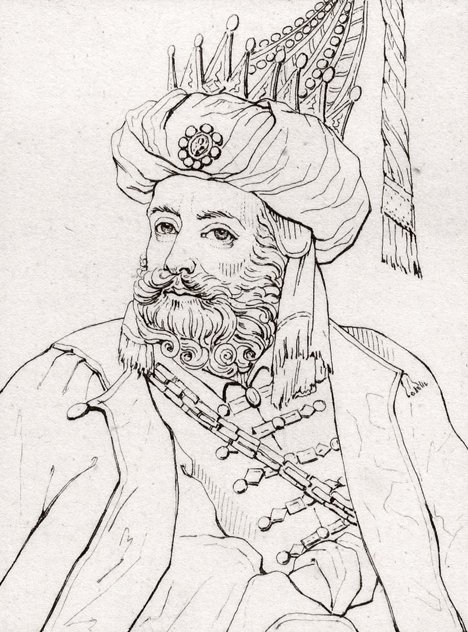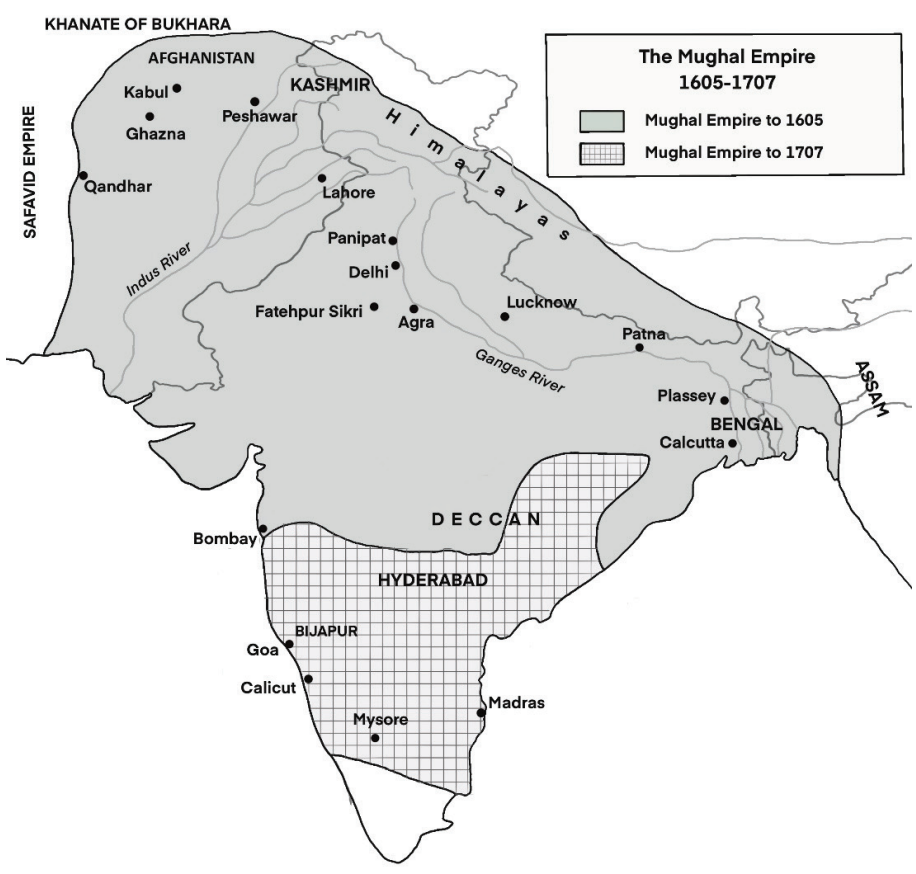Modern History Playlist
19 chapters • 0 completed
Advent of Europeans in India
9 topics
Decline of the Mughal Empire
7 topics
Emergence of Regional States
11 topics
Expansion and Consolidation of British Power
19 topics
British Government & Economic Policies (1757–1857)
4 topics
Social Reform Movements
20 topics
People’s Resistance before 1857
3 topics
The revolt of 1857
6 topics
Growth of Nationalism and Moderate Phase of Congress
6 topics
British Administration in India
7 topics
Era of Militant Nationalism (1905-1909)
5 topics
First Phase of Revolutionary Activities(1907-1917)
8 topics
India’s Response to First World War and Home Rule Movement
4 topics
Emergence of Gandhi
6 topics
Non-Cooperation Movement and Khilafat Movement
7 topics
Emergence of Swarajists, Socialist Ideas, Revolutionary Activities
5 topics
Struggle For Swaraj: 1928-1935
13 topics
Period from 1935-42
9 topics
Period from 1942-47
22 topics
Chapter 2: Decline of the Mughal Empire
Chapter TestCauses of Decline
Aurangzeb’s over-extension, weak successors, economic crisis, and rise of regional powers led to Mughal decline.
Aurangzeb’s over-extension, weak successors, economic crisis, and rise of regional powers led to Mughal decline.

Key Causes of Mughal Decline
| Cause | Explanation |
|---|---|
| Military Overstretch | Deccan wars exhausted resources |
| Weak Successors | Later Mughals lacked authority |
| Economic Breakdown | Jagirdari crisis, peasant unrest |
| Rise of Regional Powers | Marathas, Sikhs, Rajputs, Nawabs |
| Foreign Invasions | Nadir Shah (1739), Abdali (1761) |
| European Factor | British and French interference |
Fun Facts
The Peacock Throne and the Kohinoor were taken by Nadir Shah in 1739 — symbolic blows to Mughal prestige.
The breakdown of mansabdari/jagirdari systems often meant local zamindars acted as semi-autonomous powerbrokers.
Mains Key Points
Prelims Strategy Tips
Later Mughal Rulers (1707–1857)
From Bahadur Shah I (1707) to Bahadur Shah II (1857), most emperors were weak, short-lived, and dependent on nobles.
From Bahadur Shah I (1707) to Bahadur Shah II (1857), most emperors were weak, short-lived, and dependent on nobles.

Later Mughal Emperors
| Ruler | Reign | Key Events |
|---|---|---|
| Bahadur Shah I | 1707–1712 | Conciliation attempts with Rajputs, Sikhs |
| Jahandar Shah | 1712–1713 | Killed after one year |
| Farrukhsiyar | 1713–1719 | 1717 Farman to British |
| Muhammad Shah Rangeela | 1719–1748 | Nadir Shah invasion (1739) |
| Ahmad Shah | 1748–1754 | Weak ruler, lost territories |
| Alamgir II | 1754–1759 | Assassinated |
| Shah Alam II | 1759–1806 | Defeated at Buxar, Treaty of Allahabad |
| Akbar Shah II | 1806–1837 | British dominance complete |
| Bahadur Shah II (Zafar) | 1837–1857 | Last Mughal, exiled after 1857 |
Fun Facts
Farrukhsiyar’s reign shows how kingmakers (Sayyid Brothers) could control emperors.
Bahadur Shah Zafar was a poet as well as the last Mughal emperor — his exile in 1858 symbolised the end of an era.
Mains Key Points
Prelims Strategy Tips
Rise of Regional States
Marathas, Sikhs, Rajputs, and autonomous Nawabs filled the vacuum after Mughal decline.
Marathas, Sikhs, Rajputs, and autonomous Nawabs filled the vacuum after Mughal decline.
Major Regional Powers
| Region/State | Leader/Founder | Note |
|---|---|---|
| Marathas | Shivaji, later Peshwas | Expanded across India, checked by Abdali (1761) |
| Punjab | Guru Gobind Singh, Banda Bahadur, later Ranjit Singh | Sikh Confederacy & Empire |
| Awadh | Saadat Khan (1722) | Wealthy nawabdom, semi-independent |
| Hyderabad | Nizam-ul-Mulk (1724) | Established Asaf Jahi dynasty |
| Bengal | Murshid Quli Khan | Prosperous region, later Plassey (1757) |
| Rajputs | Ajit Singh of Marwar, Sawai Jai Singh of Amber | Asserted autonomy but some allied with Mughals |
Fun Facts
The Maratha Confederacy was not a unitary state but a collection of semi-independent chiefs under the Peshwa.
Serampore (a Danish post) later became an important centre for Christian missionary education in Bengal.
Mains Key Points
Prelims Strategy Tips
Foreign Invasions
Nadir Shah (1739) and Ahmad Shah Abdali (1748–1767) devastated Mughal prestige and economy.
Nadir Shah (1739) and Ahmad Shah Abdali (1748–1767) devastated Mughal prestige and economy.
Key Foreign Invasions
| Invasion | Year | Impact |
|---|---|---|
| Nadir Shah | 1739 | Battle of Karnal; looted Delhi, Peacock Throne taken |
| Ahmad Shah Abdali | 1761 | Third Battle of Panipat; halted Maratha expansion |
Fun Facts
The Kohinoor diamond—later a contested symbol—left India with Nadir Shah and changed hands multiple times thereafter.
Mains Key Points
Prelims Strategy Tips
Socio-Economic Factors
Agrarian crisis, jagirdari corruption, rising taxes, and peasant revolts accelerated decline.
Agrarian crisis, jagirdari corruption, rising taxes, and peasant revolts accelerated decline.
Fun Facts
Local revenue intermediaries (zamindars) sometimes functioned like mini-states, collecting taxes and maintaining private militias.
Mains Key Points
Prelims Strategy Tips
Legacy of Decline
Mughal decline led to regionalism, European expansion, and rise of British paramountcy.
Mughal decline led to regionalism, European expansion, and rise of British paramountcy.
Fun Facts
Many elements of Mughal court culture (language, art, cuisine) persisted long after political power declined.
Some regional dynasties retained Mughal-style titles and rituals to claim legitimacy.
Mains Key Points
Prelims Strategy Tips
MCQs
Fun Facts
Some regional rulers continued to use Mughal titulature to legitimise their authority even after central power waned.
Mains Key Points
Prelims Strategy Tips
Chapter Complete!
Ready to move to the next chapter?
